Hello,
These three coats came from a fellow I knew who was originally PPCLI in 1937, then in the Provost Corps in the war.
I asked one of the guys in my vehicles group what he thought these coats were, and, obviously to me as well, one is just a plain army overcoat. Of what design or classification I don't know.
For some reason it has all the buttons except for those on the vent (about 21 inches long) in the back and on the neck protector(?) and all the insignia removed.

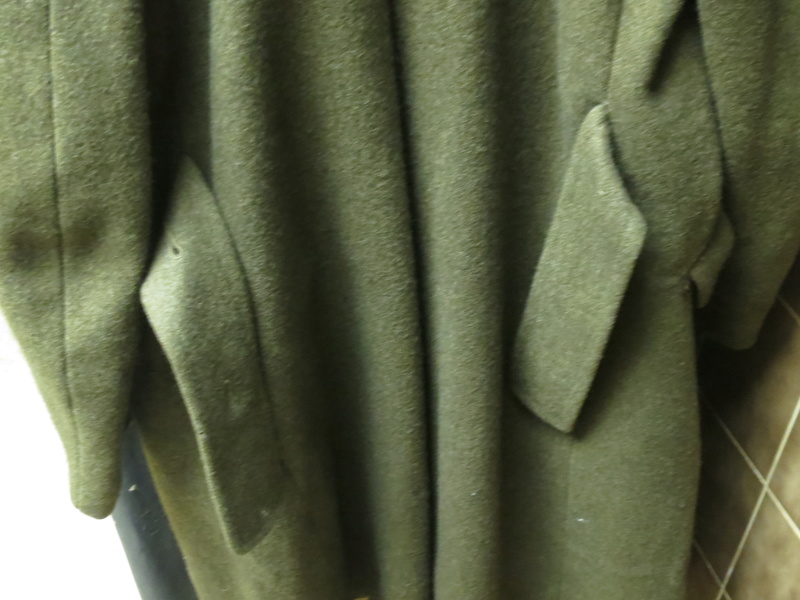
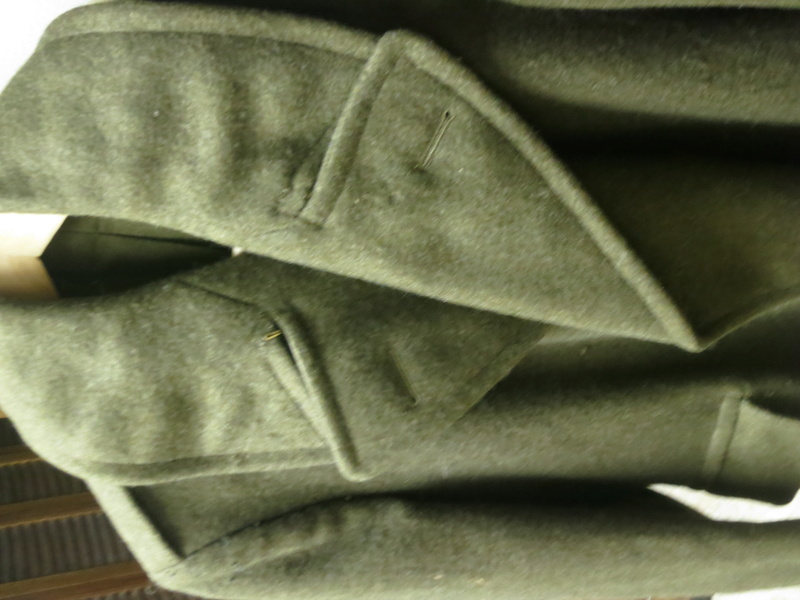
This is the neck protector and the manufacturer's stamp or is it the supplier T.E. Eaton Co. stamp?
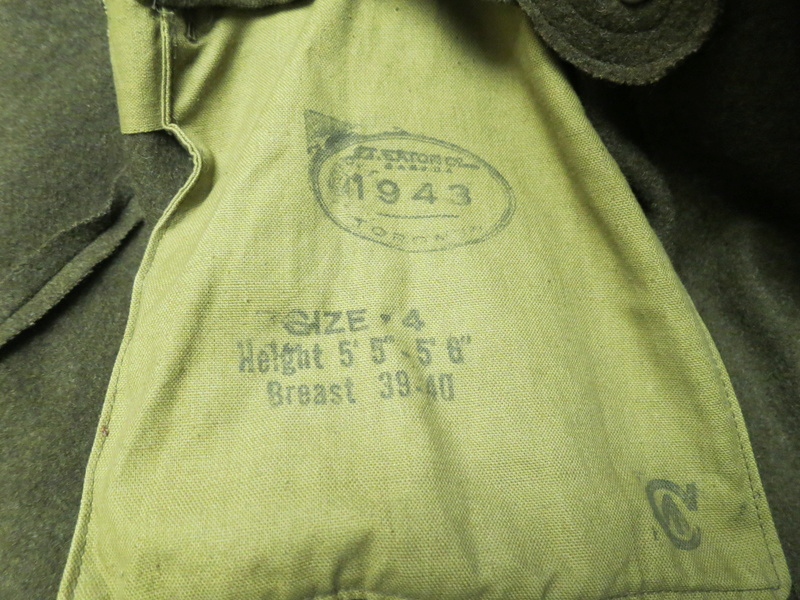
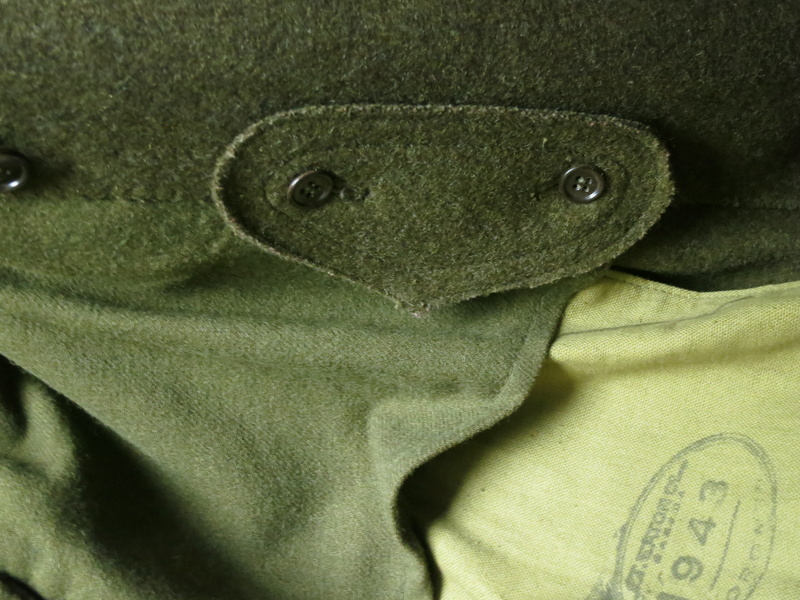
My friend indicated that the next two coats are what he called "Don R" coats. As DON was "D" in the British WWII phonetic alphabet, the dispatch riders were called Don R's.
The rubber coat is more like a protective coat. There are no pockets. What look like pockets are large slits in the rubber so the rider's hands can reach through and access his uniform.
The vent in the back of the coat is 24 inches long.
This coat is obviously Canadian, but that is all I know.

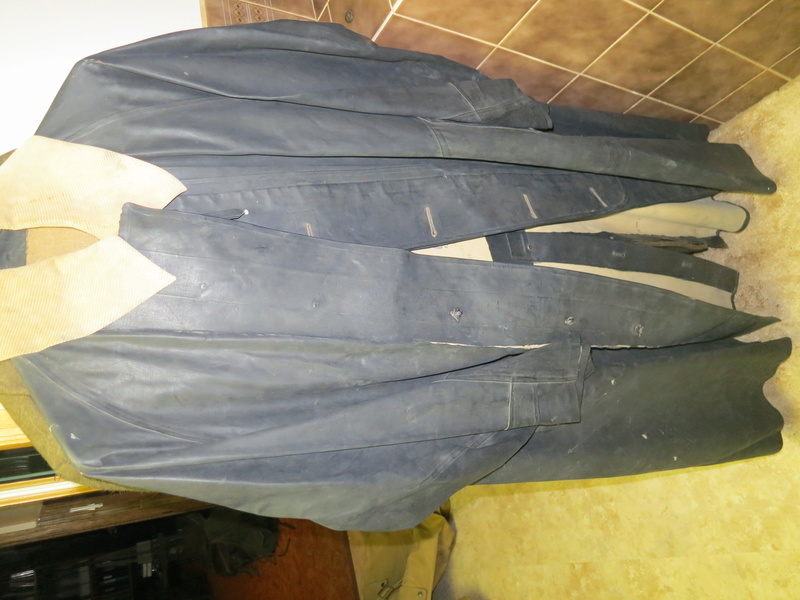
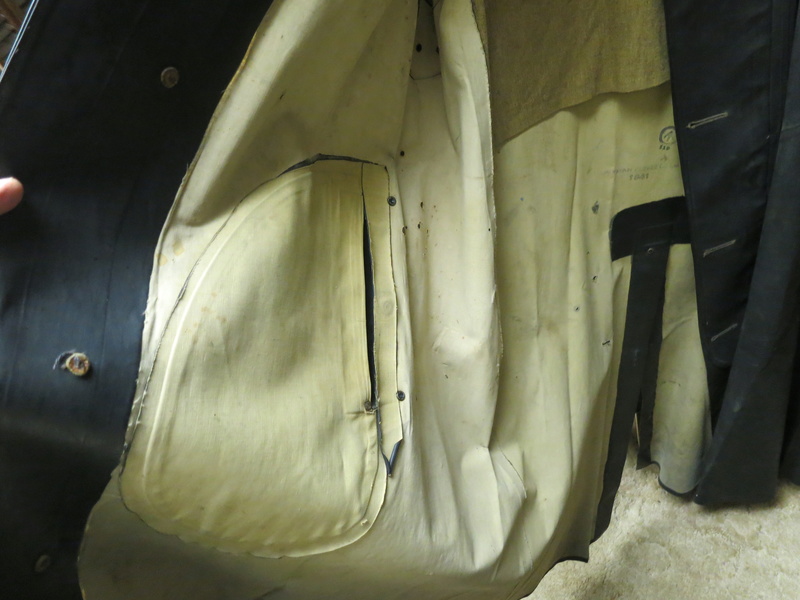
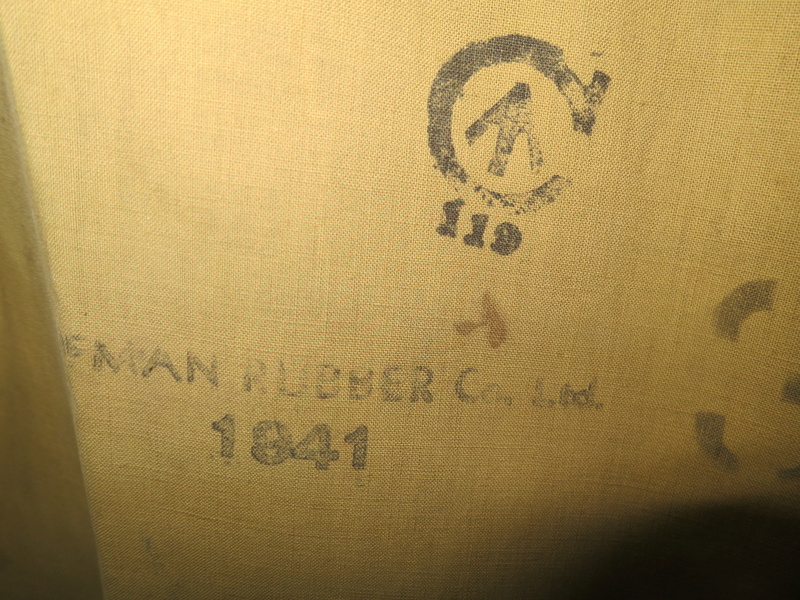
The last coat has a British War Department stamp.
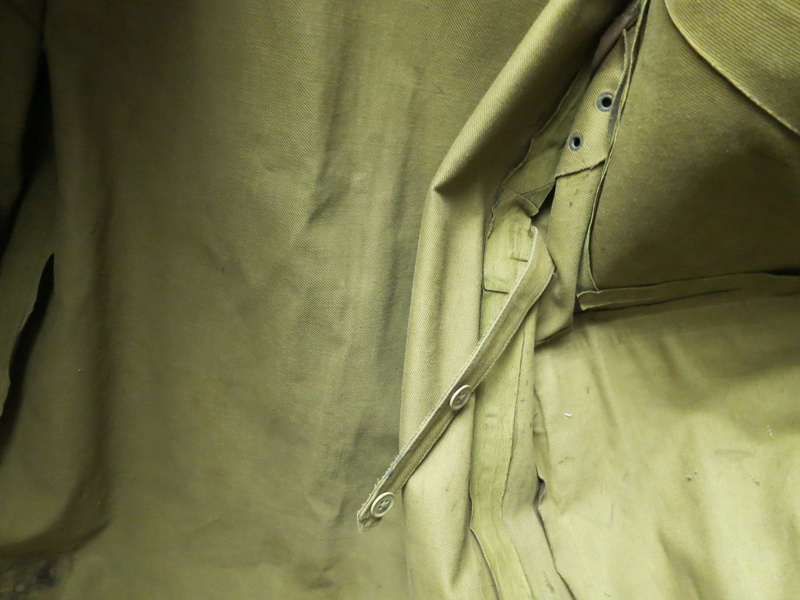


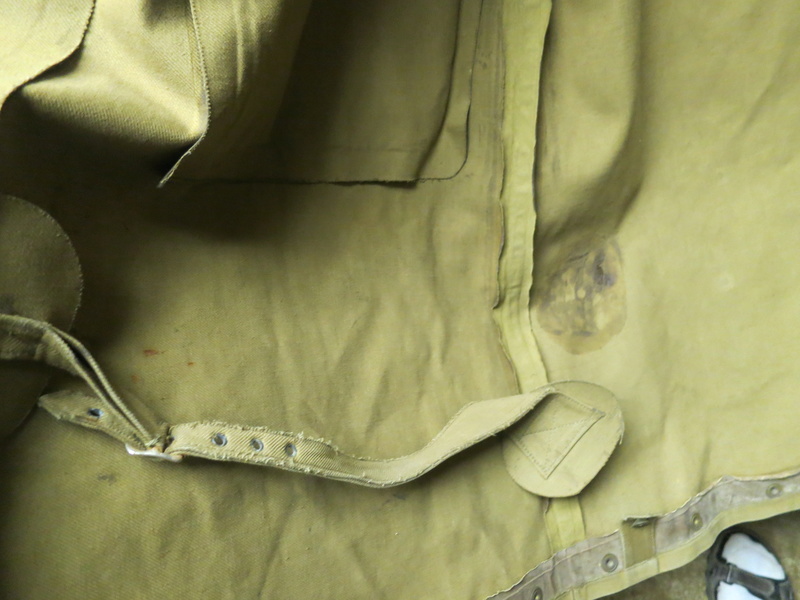
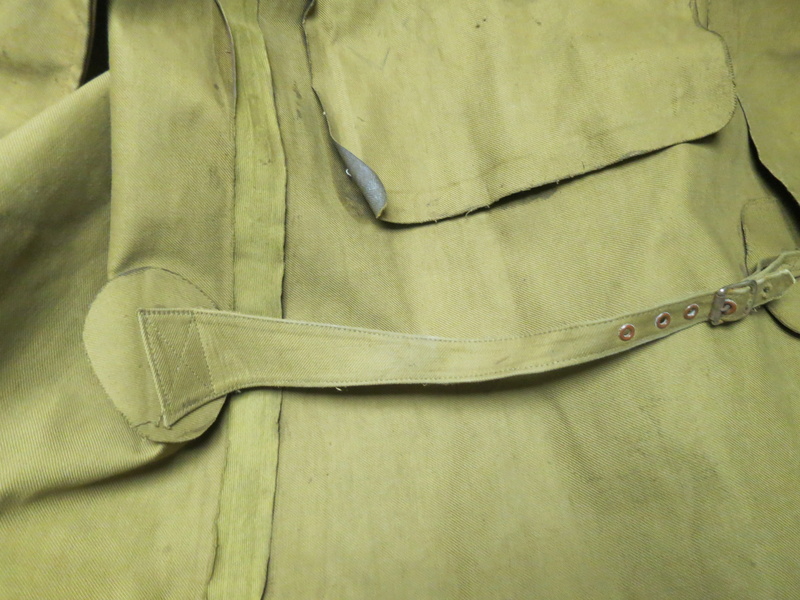
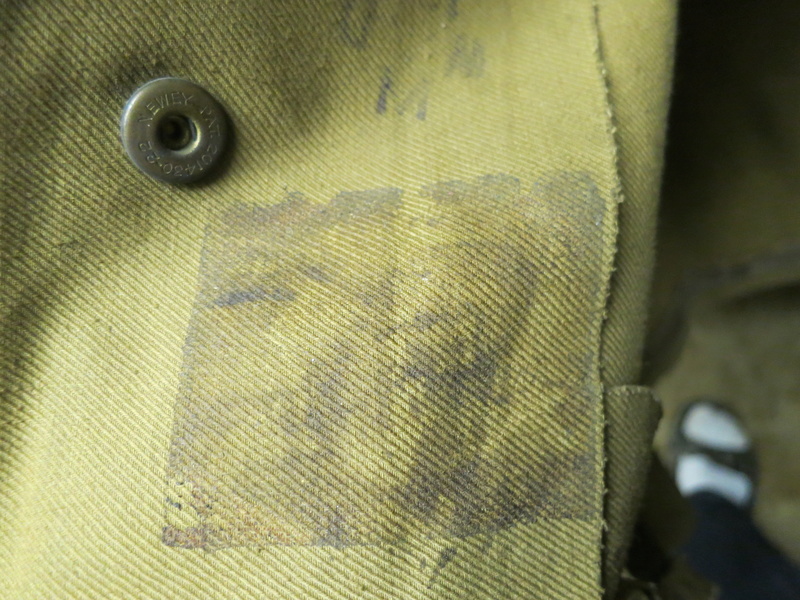
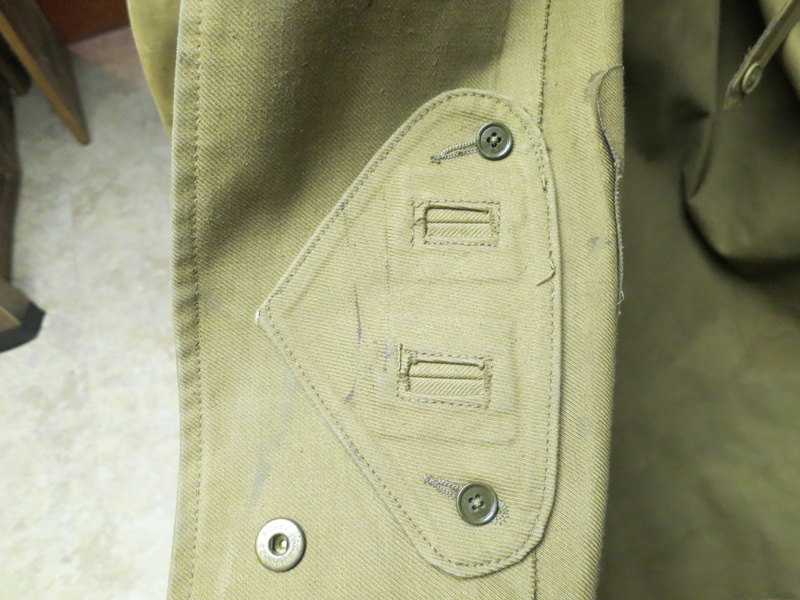
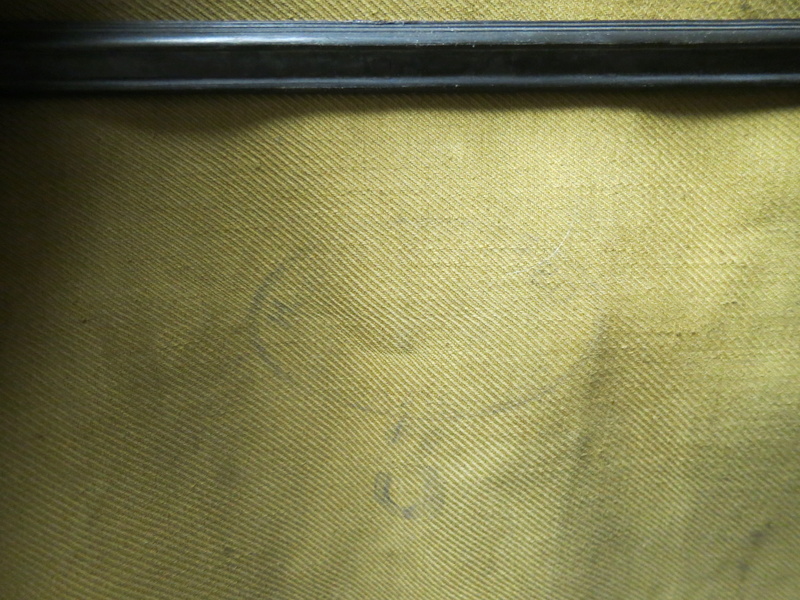
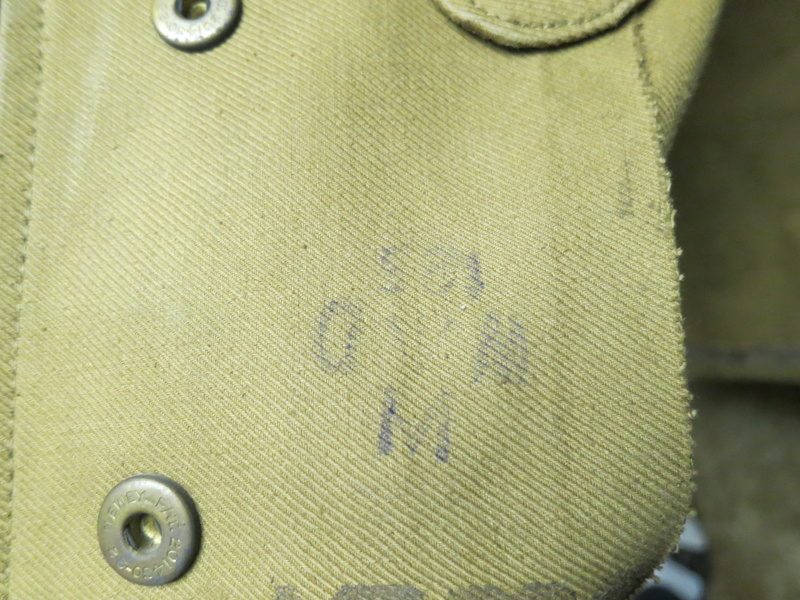
Any help is gratefully appreciated.
Regards,
Ian
These three coats came from a fellow I knew who was originally PPCLI in 1937, then in the Provost Corps in the war.
I asked one of the guys in my vehicles group what he thought these coats were, and, obviously to me as well, one is just a plain army overcoat. Of what design or classification I don't know.
For some reason it has all the buttons except for those on the vent (about 21 inches long) in the back and on the neck protector(?) and all the insignia removed.



This is the neck protector and the manufacturer's stamp or is it the supplier T.E. Eaton Co. stamp?


My friend indicated that the next two coats are what he called "Don R" coats. As DON was "D" in the British WWII phonetic alphabet, the dispatch riders were called Don R's.
The rubber coat is more like a protective coat. There are no pockets. What look like pockets are large slits in the rubber so the rider's hands can reach through and access his uniform.
The vent in the back of the coat is 24 inches long.
This coat is obviously Canadian, but that is all I know.




The last coat has a British War Department stamp.









Any help is gratefully appreciated.
Regards,
Ian



